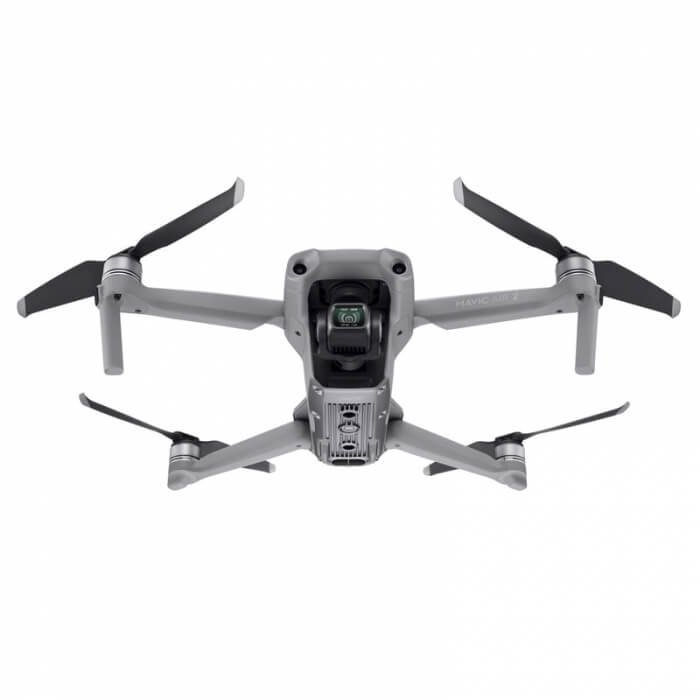Acute Vesiculobullous Hand Eczema (AVHE) is a skin condition that primarily affects your hands. It’s a complex term, but it’s not as hard to understand as it sounds. ‘Acute’ means that the symptoms arise suddenly, ‘vesiculobullous’ refers to the tiny, fluid-filled blisters (vesicles) and larger blisters (bullae) that appear on the skin, and ‘hand eczema’ means that the skin of the hand is inflamed.
AVHE is a type of hand eczema that comes on suddenly and results in small and large blisters on the skin. The word ‘acute’ implies the condition’s sudden or rapid onset, ‘vesiculobullous’ denotes the type of skin lesions it causes (small to large blisters), and ‘hand eczema’ indicates the inflammation of the skin on the hands.
Types
If you are dealing with hand eczema, you might wonder about the different types you could be dealing with. So, let’s break it down into the top types of acute vesiculobullous hand eczema:
1. Pompholyx (Dyshidrotic Eczema)
Pompholyx, also called dyshidrotic eczema, is the most common form of acute vesiculobullous hand eczema. This type of eczema is named for the tiny blisters or vesicles that appear on the hands, fingers, and sometimes on the feet. These blisters can often be itchy and filled with fluid. Imagine having small water droplets under your skin, causing you a prickly itchy feeling, that’s what this feels like.
2. Id Reaction (Autoeczematization)
Id reaction, also known as autoeczematization, is an unusual response of your body to an infection or other disease. Here, blisters appear on your hands (and sometimes other body parts) as a reaction to something else that’s happening in your body. So, this isn’t a skin issue that just appears on its own; it’s more like your body’s alarm system, telling you that there’s another problem to address.
3. Contact Dermatitis
Contact dermatitis is a type of eczema that happens when your hands touch something they’re sensitive or allergic to. For instance, if you’ve ever had a skin reaction to jewelry or a certain type of soap, that’s a kind of contact dermatitis. Sometimes, this can result in a vesiculobullous response, leading to the formation of blisters on your hands. Each of these types of vesiculobullous hand eczema might have different triggers, such as stress, certain metals, soaps, and even the weather
Causes
Here are the top causes: By addressing these causes, you can improve your hand health and prevent eczema flare-ups.
1. Skin Irritants: Certain substances like harsh soaps, detergents, and cleaning agents can irritate the skin on your hands, leading to eczema. Always use mild, hypoallergenic products to wash your hands.
2. Allergens: Allergens such as certain metals (e.g., nickel), fragrances, and latex can trigger eczema in susceptible individuals. Identify and avoid contact with these allergens.
3. Wet Work: Frequent exposure to water and moisture, especially during tasks like dishwashing or cleaning, can damage the skin barrier, making it more susceptible to eczema. Wear waterproof gloves to protect your hands.
4. Weather Changes: Extreme temperatures, cold winds, or excessive heat can cause dryness and irritation on the hands. Moisturize your hands regularly, especially during harsh weather conditions.
5. Stress: Stress can weaken the immune system and increase inflammation, leading to eczema flare-ups. Practice stress-reduction techniques like meditation or yoga.
6. Genetics: A family history of eczema can increase your risk of developing vesiculobullous hand eczema. Stay vigilant and take preventive measures.
7. Contact Dermatitis: Contact with certain substances, like poison ivy or harsh chemicals, can lead to allergic contact dermatitis, which may manifest as hand eczema. Avoid contact with these irritants.
8. Frequent Hand Washing: While hand washing is essential for hygiene, excessive washing can strip away natural oils and lead to eczema. Opt for gentle, moisturizing hand soaps.
9. Overuse of Hand Sanitizers: Frequent use of alcohol-based hand sanitizers can dry out your skin and worsen eczema. Use them sparingly and choose moisturizing variants.
10. Food Allergies: In some cases, certain food allergies can trigger hand eczema. Pay attention to your diet and consult a doctor if you suspect any food allergies.
11. Medications: Some medications can cause an allergic reaction leading to hand eczema. Discuss potential side effects with your healthcare provider.
12. Occupational Exposure: Certain occupations, such as hairdressing or healthcare, may expose you to chemicals and irritants that can cause hand eczema. Take necessary precautions and use protective gear.
13. Allergic Reactions to Plants: Coming into contact with certain plants, like poison oak or sumac, can cause allergic reactions and lead to hand eczema. Learn to identify these plants and avoid them.
14. Microbial Infections: Bacterial or fungal infections on the hands can exacerbate eczema symptoms. Keep your hands clean and dry to prevent infections.
15. Hormonal Changes: Hormonal fluctuations, such as those during pregnancy or menopause, can affect the skin and trigger eczema. Be extra mindful of your skincare routine during these times.
16. Autoimmune Disorders: Some autoimmune diseases, like psoriasis or lupus, can present with hand eczema. If you have a known autoimmune condition, work closely with your healthcare provider.
17. Nickel Allergy: Nickel, commonly found in jewelry and metal objects, can trigger allergic reactions leading to hand eczema. Opt for nickel-free accessories.
18. Certain Fabrics: Irritating fabrics like wool or synthetic materials can cause eczema flare-ups. Stick to soft, breathable fabrics like cotton.
19. Smoking: Smoking can reduce blood flow to the skin, causing dryness and worsening eczema symptoms. Quit smoking for healthier skin.
20. Alcohol Consumption: Excessive alcohol intake can dehydrate the skin, making it more prone to eczema. Drink in moderation and stay hydrated.
21. Sun Exposure: Prolonged sun exposure can irritate eczema-prone skin. Wear protective clothing and use sunscreen on your hands.
22. Vitamin D Deficiency: Vitamin D plays a role in skin health. Ensure you get enough sunlight exposure or consider vitamin D supplements after consulting a healthcare professional.
23. Excessive Scrubbing: Scrubbing your hands vigorously can damage the skin and lead to eczema. Be gentle while cleaning your hands.
24. Dry Air: Low humidity levels can dry out the skin, exacerbating eczema. Use a humidifier to maintain moisture in the air.
25. Eczema Herpeticum: A viral infection, commonly caused by the herpes simplex virus, can worsen hand eczema. Seek medical attention if you suspect this infection.
26. Dust Mites and Pet Dander: Allergens like dust mites and pet dander can trigger eczema. Keep your living spaces clean and free from allergens.
27. Prolonged Water Immersion: Spending extended periods in water, such as during swimming or soaking in hot baths, can worsen hand eczema. Limit water exposure and moisturize after water activities.
28. Poor Sleep: Lack of sleep can weaken the immune system and exacerbate eczema. Prioritize a good night’s sleep for healthier skin.
29. Caffeine and Spicy Foods: Caffeine and spicy foods can trigger inflammation in some individuals, leading to eczema flare-ups. Moderation is key.
30. Underlying Health Conditions: Certain medical conditions, like thyroid disorders or diabetes, can impact the skin and lead to eczema. Work with your healthcare provider to manage these conditions effectively.
Symptoms
Here we’ll outline the top symptoms of this condition in a straightforward, easy-to-understand manner.
- Itchy Blisters: One of the first and most common symptoms is small, itchy blisters, usually on the palms or sides of the fingers.
- Redness: Affected areas often appear red or inflamed due to irritation.
- Swelling: You may notice your hands or fingers swelling, particularly around blistered areas.
- Pain: Over time, the affected areas can become painful, particularly when the blisters burst.
- Dryness: Your hands may feel unusually dry or chapped.
- Cracked Skin: The dryness can eventually lead to the cracking of the skin.
- Peeling Skin: As the blisters heal, you may notice your skin starting to peel.
- Burning Sensation: Some people report a burning sensation in the affected areas.
- Oozing Blisters: In some cases, blisters may ooze fluid when they burst.
- Infection Signs: If not treated correctly, the condition can lead to skin infection, with symptoms like increased redness, pus, or a foul smell.
- Thickened Skin: Over time, the skin in the affected area may become thick and leathery, a condition known as lichenification.
- Skin Discoloration: The skin might change color, often becoming darker around the affected areas.
- Nail Changes: Nail changes like ridges or dents can occur if the condition affects the fingernails.
- Sensitivity to Touch: The skin may become unusually sensitive to touch.
- Heat Intolerance: Many patients report that symptoms worsen with heat and sweating.
- Increased Symptoms at Night: Itchiness and discomfort might increase at night, disturbing your sleep.
- Fluid-filled Blisters: The small blisters (vesicles) on the skin are often filled with fluid.
- Difficulty in Movement: If the condition is severe and fingers are affected, it can lead to difficulty in bending or straightening the fingers.
- Frequency of Flare-Ups: Acute Vesiculobullous Hand Eczema often occurs in cycles – symptoms may improve and then worsen.
- Stress Connection: Many sufferers report that symptoms flare up during periods of high stress.
Remember, Acute Vesiculobullous Hand Eczema is a condition that needs professional medical attention. If you notice these symptoms, it is important to contact a healthcare provider for a correct diagnosis and suitable treatment.
Diagnosis
If you’re dealing with a skin condition known as ‘Acute Vesiculobullous Hand Eczema’, you might be wondering about the diagnosis and testing process. We are here to help. Let’s break it down into simple English so that it’s easier for you to understand.
- Clinical Examination: This is often the first step. Your doctor looks at your hands and the blister-like formations to check for signs typical of this condition.
- Medical History: Your past health details matter. Any history of allergies, skin conditions, or exposure to specific irritants can lead the doctor toward the diagnosis.
- Patch Testing: It’s like a detective game for your skin. Small amounts of potential allergens are applied to your skin using patches. If you’re allergic, you’ll develop a small rash on the spot.
- Prick Test: Think of this as a more direct version of the patch test. It involves introducing a small amount of allergen into the skin using a tiny needle.
- Blood Tests: These look for signs of inflammation or infection that could be causing the eczema.
- Biopsy: This is a tiny sample taken from your hand’s skin. It’s looked at under a microscope to help diagnose the condition.
- Skin Swab: This test looks for infections on the skin surface that may be causing or worsening the eczema.
- Intradermal Test: Similar to a prick test, a small amount of allergen is injected into your skin’s dermal layer.
- IgE Test: This blood test looks for antibodies that the body might be producing in response to an allergen.
- Complete Blood Count (CBC): This common blood test provides a broad look at your overall health.
- Eosinophil Count: Eosinophils are a type of white blood cell often elevated in people with allergies and eczema.
- RAST Test (Radioallergosorbent Test): This blood test is used to identify what substances could be causing an allergic reaction.
- Skin Scraping: Small sections of your skin are gently scraped to collect samples for testing for fungi or other microorganisms.
- Tzanck Test: This test examines skin cells from blisters to diagnose viral infections that could be related to your condition.
- Direct Immunofluorescence: A biopsy sample is treated with special dyes that glow under a microscope, showing if immune system substances are present.
- Indirect Immunofluorescence: Similar to the direct test, but instead of your skin sample, it uses a sample of your blood serum.
- Serum Electrolytes: Checks the balance of minerals in your blood, as imbalances can sometimes contribute to skin conditions.
- Thyroid Function Test: This checks for thyroid issues, as they can sometimes trigger or worsen skin conditions.
- Liver Function Tests: Your liver’s health can influence your skin. This test checks for any abnormalities.
- Kidney Function Tests: Like the liver, your kidneys’ health can impact your skin.
- Lipid Profile: It looks for abnormalities in fats in your blood that could influence your skin’s health.
- Skin Prick Test: It’s a quick, painless test to diagnose allergies.
- Autoantibodies Test: It checks for autoimmune diseases that might be causing or exacerbating your skin condition.
- Mantoux Test: This test is done to rule out tuberculosis, a serious bacterial infection that can sometimes cause skin symptoms.
- Erythrocyte Sedimentation Rate (ESR): This blood test measures inflammation in your body.
- C-Reactive Protein (CRP) Test: Another test for inflammation, often done alongside the ESR.
- Flow Cytometry: This test characterizes and counts cells in your blood or skin sample.
- Enzyme-Linked Immunosorbent Assay (ELISA): This test measures specific proteins in your blood that can be related to allergies or autoimmune diseases.
- Western Blot: This test identifies specific proteins in a sample of your tissue or blood.
- Polymerase Chain Reaction (PCR): This test can detect the DNA of viruses or bacteria that might be affecting your skin.
Treatment
But don’t worry, effective treatments are available we’ll take a look at the top 30 treatments for this skin issue. We aim to explain each in simple terms to ease your understanding.
- Moisturizers: The first line of defense. Regular use of moisturizers can help soothe dry, itchy skin, and create a protective barrier.
- Topical Steroids: Creams or ointments that contain corticosteroids. They reduce inflammation and itching.
- Antihistamines: Pills that help control itching, especially during the night.
- Topical Calcineurin Inhibitors: A non-steroidal cream which reduces inflammation and redness.
- Cold Compresses: Simple cold pack applications can ease itching and swelling.
- Phototherapy: This medical treatment uses specific wavelengths of light to reduce symptoms.
- PUVA Therapy: A type of phototherapy combining Psoralen (a medication) and UVA light.
- Topical Retinoids: Vitamin A-based creams that can help regulate skin cell turnover.
- Oral Steroids: Pills like prednisone, used in severe cases, can quickly reduce inflammation.
- Immunosuppressants: Drugs like cyclosporine can help when the body’s immune response is overactive.
- Coal Tar Preparations: Used for decades, they help slow skin cell growth and ease itching.
- Antibiotic Creams: Used when eczema is complicated by bacterial infections.
- Hand Protection: Use of gloves while working to avoid exposure to irritants.
- Biofeedback Therapy: A technique that helps control the body’s response to itching and stress.
- Stress Management: Techniques like yoga or mindfulness to manage eczema triggers.
- Oral Antifungal Agents: If fungal infections complicate your eczema, these can help.
- Dietary Adjustments: Certain foods can trigger eczema; identifying and avoiding them may help.
- Alitretinoin: A retinoid used orally in cases where other treatments have failed.
- Botulinum Toxin Injections: Recent studies suggest they may reduce hand eczema severity.
- Evening Primrose Oil: An over-the-counter supplement that can improve skin health.
- Omega-3 Fatty Acids: Found in fish and flaxseed, they can support overall skin health.
- Probiotics: Supplements that enhance gut health, potentially improving skin conditions.
- Bleach Baths: Mild bleach baths can decrease bacteria on the skin, reducing inflammation.
- Acupuncture and Acupressure: Traditional Chinese methods that could reduce stress and itching.
- Oatmeal Baths: Colloidal oatmeal has antioxidant and anti-inflammatory properties to soothe skin.
- Hypnotherapy: Mind-body therapy that can help manage stress and potentially decrease itching.
- Homeopathic Remedies: Treatments like Graphites or Sulphur can be used, but consult a professional first.
- Topical Cannabinoids: Emerging research suggests CBD may soothe eczema symptoms.
- Bathing Routine Changes: Avoiding hot baths and limiting soap use can prevent skin drying out.
- Green Tea Extracts: Natural antioxidant and anti-inflammatory compounds may soothe the skin.
Each treatment has its benefits and possible side effects. It’s important to discuss these options with a healthcare professional to determine what will work best for your specific needs. Remember, what works for one person might not work for another. It’s all about finding the right balance and management strategy for you.
Acute Vesiculobullous Hand Eczema can seem daunting, but with the right treatment plan, it doesn’t have to be. Understanding your options and working closely with your healthcare provider is the first step towards clearer, healthier skin.
















